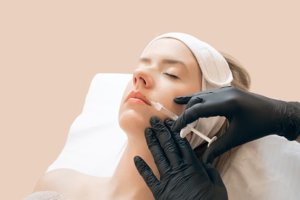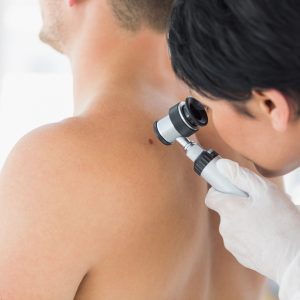
Credit: www.refinery29.com

Credit: www.refinery29.com
 Baths may seem like a relaxing escape, but skin experts say when it comes to the benefit of your skin, you’re better off taking showers. Dr. Anatoli Freiman of the Toronto Dermatology Centre tells Global News, when you take long baths or even long showers, it starts to affect your skin. “The skin can dry out,” he says. “But the message is, after the shower or bath, you need to pat yourself dry and moisturize to seal it.”
Baths may seem like a relaxing escape, but skin experts say when it comes to the benefit of your skin, you’re better off taking showers. Dr. Anatoli Freiman of the Toronto Dermatology Centre tells Global News, when you take long baths or even long showers, it starts to affect your skin. “The skin can dry out,” he says. “But the message is, after the shower or bath, you need to pat yourself dry and moisturize to seal it.”
Click here for the full article.
Credit: globalnews.ca


The City of Toronto is partnering with two melanoma foundations to expand a free sunscreen program to more parks this summer after the success of last year’s pilot project.
The city announced Monday that it is working again with the David Cornfield Melanoma Fund and the Douglas Wright Foundation, both of which will be covering the costs.
Representatives from both foundations said the sunscreen dispensers would help raise awareness of sun safety and melanoma, which they described as one of the fastest rising cancers in Canada.
“We’re having increasing rates of melanoma, the deadliest form of skin cancer. Every year, it’s increasing by 2 per cent for women annually, and 2.1 per cent for men,” Dr. Jennifer Beecker, national chair of Canadian Dermatology Association sun awareness working group, said in an interview.
“One of the most important things in skin cancer prevention is sun protection.”
Beecker cited a study conducted in Australia that found regular application of sunscreen could decrease the incidents of melanoma by 50 per cent over an 11-year period.
She added that seeking shade during sunny days could prove to be helpful as well, especially for children, whose skin is particularly vulnerable to sun damage.
Credit: thestar.com

Unmarried patients may need more frequent dermatology visits
Married patients with melanoma are more likely to get a timely diagnosis and treatment of their disease compared with those who are unmarried, divorced or widowed, shows the latest research published in Jama Dermatology.
The researchers, based out of the Hospital of the University of Pennsylvania, noted that while marital status has been shown to improve outcomes in breast, colon and renal cancers, for melanoma it is also linked to a risk for regional and/or distant metastases at diagnosis. Unmarried patients present with more advanced stages of disease.
Using a large cancer registry, the researchers identified 52,063 patients (with an average age of 64) with nonmetastic melanoma who had recorded marital and sentinel lymph node status from 2010 to 2014. Of the more than 16,000 married patients, 46% presented with early-stage melanoma compared with 43% of those divorced or never-married and 32% of widowed patients. Widowed patients were also more likely to present at a later stage of the disease than those who were married.
Married patients were also more likely to undergo sentinel lymph node biopsy for appropriate tumours.
The researchers say these findings support increased emphasis on training spouses to exam their partner’s skin for irregularities and perhaps more frequent screening for unmarried patients.
The study’s senior author, Dr. Giorgos C. Karakousis, an associate professor of surgery at the University of Pennsylvania, said the real message here is two-fold: Having a long-term partner plays a positive role in getting patients to seek medical help sooner, and to follow through with recommended treatment. “That may speak to the fact that having your spouse with you allows you to make more informed decisions, especially when you’ve just been diagnosed with cancer and are not thinking completely straight,” he said.
“The implications of these results could be that dermatologists consider altering the frequency schedule for their unmarried patients—and encourage them to bring a friend during medical visits,” added Dr. Karakousis.
The research group will now explore their own institutional records in more depth to extract more information around marital status and melanoma diagnosis/treatment. One of the questions will be to determine whether people in long-standing relationships achieve similar outcomes to those who are married.
“We’re also considering the potential of a pilot study with the dermatology group here to see whether changing frequency of visits based on marital status will impact outcomes,” he said.
Article by CANADIANHEALTHCARENETWORK.CA

“The youngest who have wrinkles in the forehead, between the eyes or crows feet, are very light skinned women with a history of excessive sun exposure. In that case, they may be as young as their late 20s. There are unusual cases of people in their early to mid twenties who overuse their forehead muscles which become overgrown and in those cases it may also be appropriate.” —Dr. Macrene Alexiades-Armenakas, Dermatologist and Founder of 37 Actives
“Most women under the age of 23 maybe even 25 do not typically need Botox.” —Dr. Stafford Broumand, Plastic Surgeon and Associate Clinical Professor of Plastic Surgery at The Mount Sinai Hospital.
Click here to view what other dermatologists had to say.
Credit: https://www-harpersbazaar-com

Fact is that not all moles, beauty marks, or other skin spots are created equal. Some can actually be downright dangerous. Your first line of defense is wearing SPF each and every day—and reapplying often during days when you’re outdoors. Your second line of defense is going for a yearly skin check at your dermatologist’s office. Your third line? Knowing what to look for in between those visits. With May being Melanoma Awareness Month, we chatted with Skincare.com experts, and board-certified dermatologists and skin cancer specialists, Dr. Dendy Engelman and Dr. Snehal Amin, to get a better understanding of of the ABCDEs of moles and melanoma.
“There are so many types of skin spots and growths that the best way to learn about them is to look at your skin with a trained dermatologist. They can show you on your own skin the difference between a mole and a freckle or a precancer and a sunspot. The quick Google search cannot replace the judgment of an experienced dermatologist.”
Read the rest here.
Credit: skincare.com
 An Edmonton woman visiting Halifax says she was removed from an Air Canada flight after the crew wrongly assumed she had a contagious disease.
An Edmonton woman visiting Halifax says she was removed from an Air Canada flight after the crew wrongly assumed she had a contagious disease.
On Sunday evening, an Air Canada flight between Halifax and Toronto was delayed from 6:25 p.m. to 2 a.m. Monday, which the airline says was because “a passenger was believed to have a transmissible skin disease.”
That passenger was Jeanne Lehman, who says she started feeling unwell and developing a rash on her forehead after arriving in Halifax on Wednesday.
Click here to view the full article.
Credit: cbc.ca
Natalie Richardson is a mother to identical twins, writer and melanoma survivor. When diagnosed in 2014, her initial reaction was that it’s “just skin cancer.” Today, after going through multiple surgeries, a clinical trial and experiencing the devastating impact the condition can have, she regrets this misperception. She now advocates to raise awareness about this deadly disease and has been sharing her journey on her blog, The Impatient Patient.
Credit: By Natalie Richardson, huffingtonpost.ca